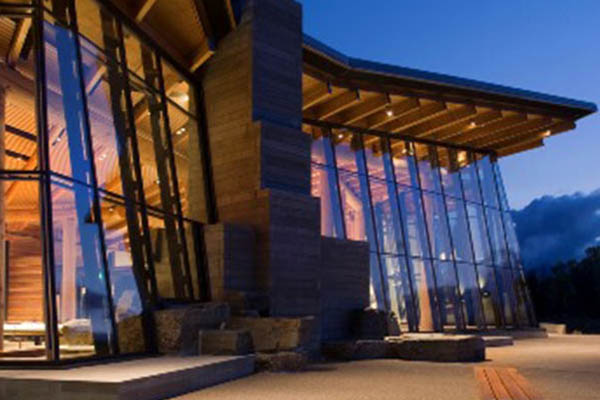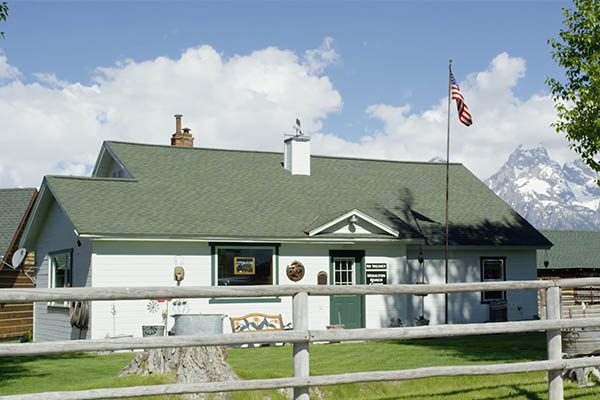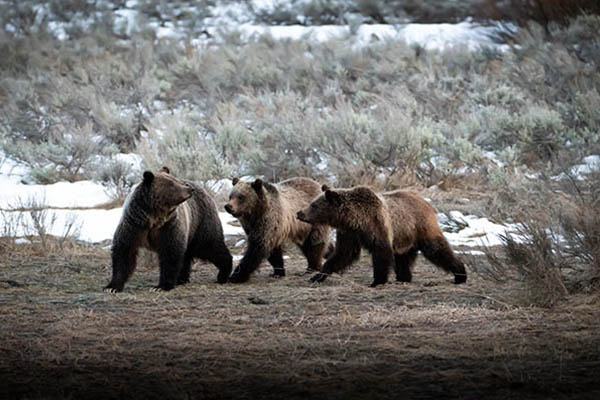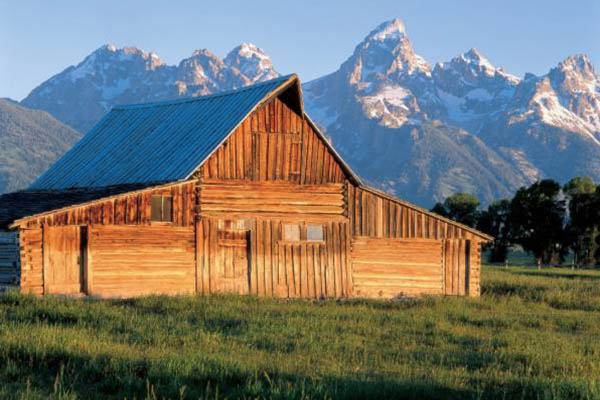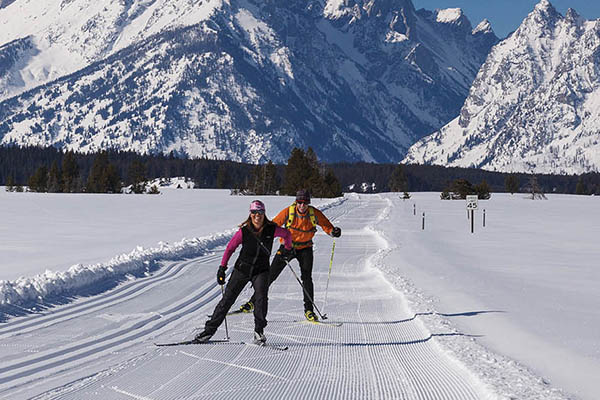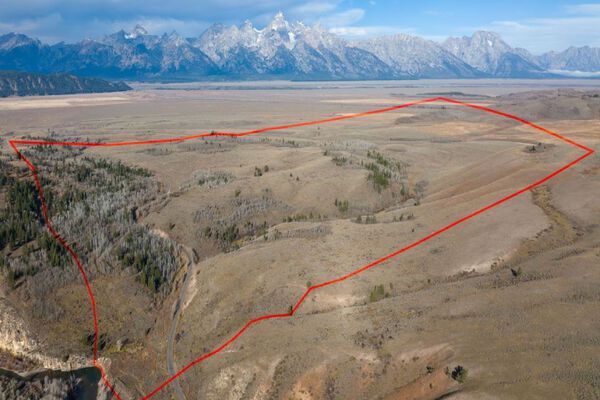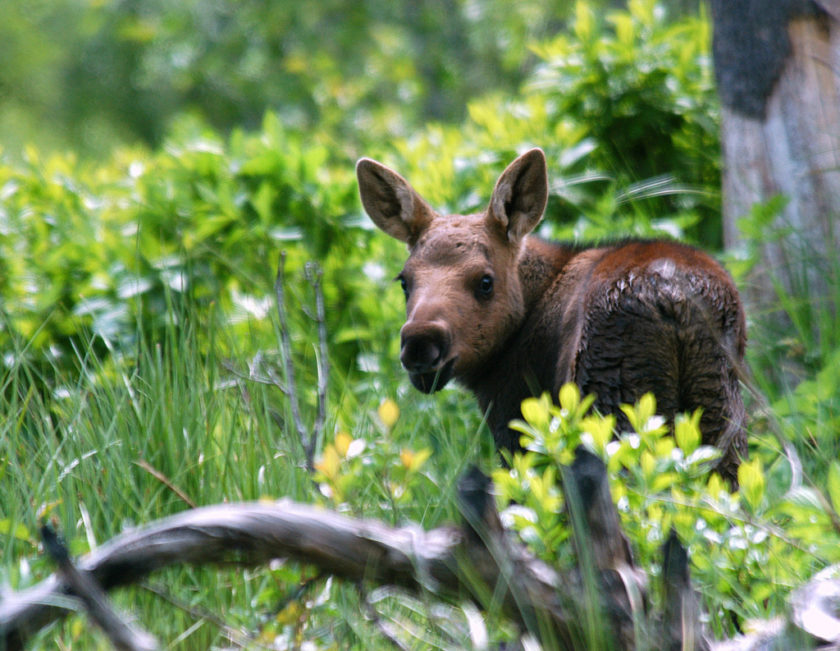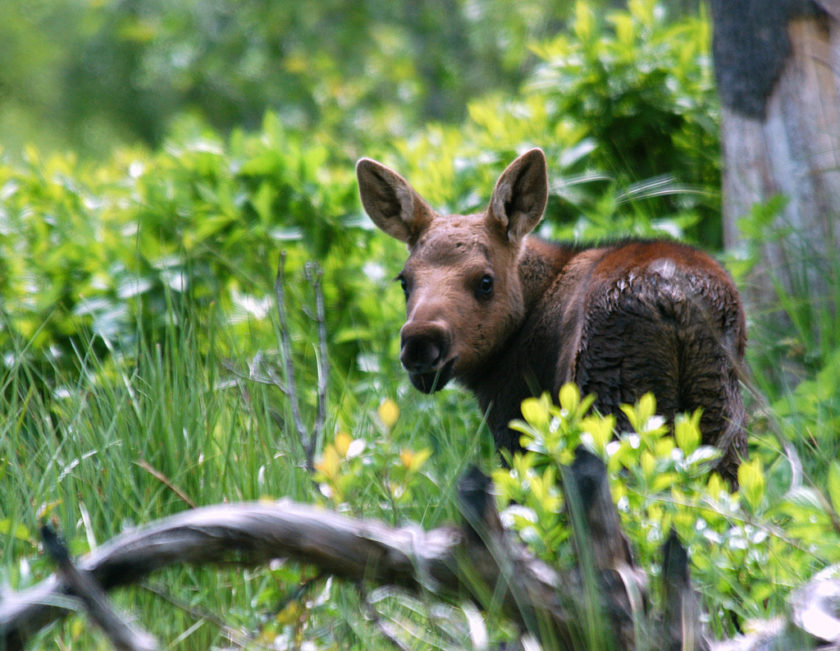
If you are lucky enough to see a baby moose, be sure to keep your eye out for its protective mother. Photo by Jerry Herman.
Long days and warm temperatures mark summer’s arrival in Grand Teton National Park. As daily high temperatures rise with the season, mid-day animal activity will be reduced considerably. Be sure to get out early in the morning or later in the evening for your best chance to see some of the park’s incredible wildlife.
• Wolf pups from successfully reproducing packs have now emerged from their dens. They do not stray too far from their dens, rendezvous sites, or the watchful eye of adults. They are out and about, learning from the new world around them while playing and growing rapidly.
• Trumpeter swan eggs are hatching. Young swans, or cygnets, are typically light gray in color and can swim within 24 hours of hatching. They will be roughly three and a half to four months old before they take their first flight.
• The spring birth pulse for Jackson Hole ungulates (mammals with hooves) is winding down. Most ungulate babies are on their feet and able to move the day they are born. Some, like bison, use the follower strategy, where the new calves stay with their mothers at all times. Others, like deer, elk, and pronghorn, use the hider strategy, where mothers often hide their newborn fawns or calves and return to them periodically to nurse.
• Moose are VERY protective of their young. Please be cautious and give them a wide berth.
• Marmots, one of the largest mammals in the squirrel family, are active and feeding primarily in the morning and evening and rest during the heat of the day.
• Neotropical birds, such as ruby crowned kinglets, western tanagers, and hummingbirds, have returned and are busy breeding and raising young.
• Grizzly bear 610 emerged from her den in March with her two 2 year olds. The family broke up, as was expected, in April and have not been very visible since. 610 likely started a new reproductive cycle this spring and will hopefully emerge in 2018 with one or more cubs.
• Grizzly bear 399 is 21 years old and, against the odds, emerged with two cubs-of-the-year in May. In 2016, 399’s one cub was tragically killed in a collision with a vehicle in mid-June. This is a good reminder for all of us to drive slowly and be vigilant for wildlife at all times, particularly after dark or at dawn/dusk.
• An additional sow grizzly with 2 cubs-of-the-year also emerged in May. Interestingly, this family group has been observed foraging within view of park roads and in close proximity, but not at the same time, to grizzly bear 399 and her cubs. If you are lucky enough to see any of these or other bears, please give them the space they deserve so that others can also enjoy their presence. Park regulations require that visitors stay 100 yards or further away from bears and wolves.
• Mosquitoes are now out in force (but vary in abundance across the landscape), providing food to birds, bats, fish, and other species.
• This year’s abundant snow and spring rains have resulted in tremendous vegetation growth, particularly among grasses and forbs, which will benefit many species of wildlife.
• Spring spawning has been observed among Utah suckers at Emma Matilda Lake, Heron Pond, and Jackson Lake, with pelicans taking advantage of associated feeding opportunities at some sites. More spawning congregations will occur in other park lakes in the coming weeks.

